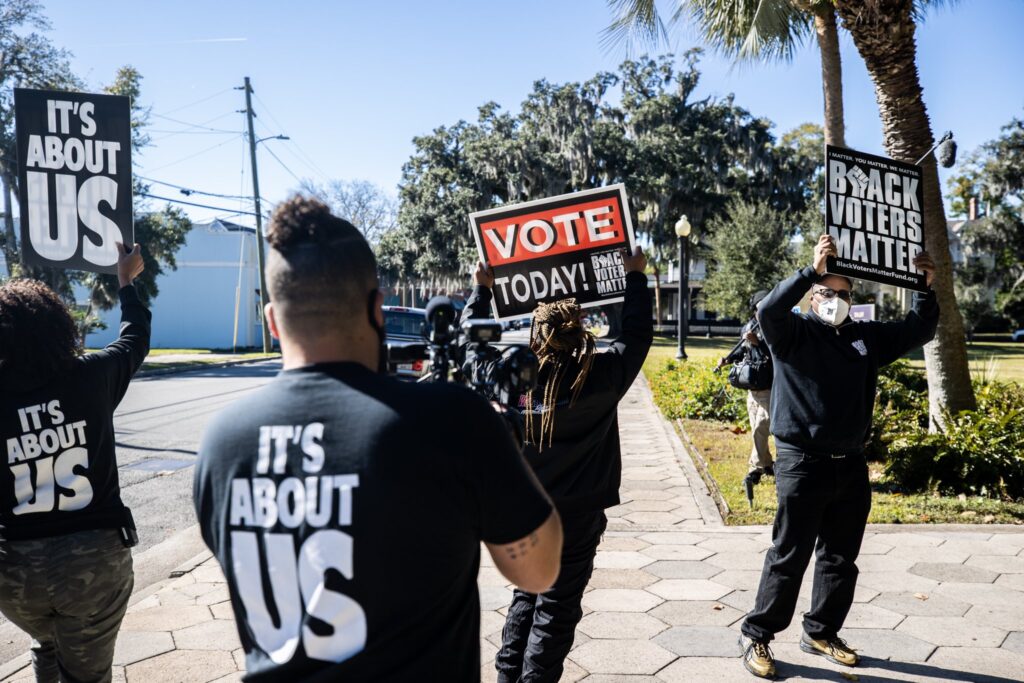“It is clear that a culture and expectation of political participation has started to emerge among young people that includes being engaged on issues, registering to vote, voting and encouraging others to do so.”

There have been more eyes on Georgia in recent months than in any other election in modern history. The state turned blue in November’s presidential election, granting its 16 electoral votes to the Democratic candidate for the first time since 1992.
Two months later, Georgia made history again by flipping the balance of the U.S. Senate. And young voters, especially young Black voters, were critical to this historic shift.
The number of registered voters in Georgia ages 18 and 24 has increased by 35 percent since 2016. Moreover, 23,000 of the young voters eligible in Jan. 5’s runoff were not 18 by the time of the Nov. 3 election. In total, almost one in five young voters (ages 18-29) who voted in the recent Georgia runoffs did not vote in the general election—made up disproportionately of Black youth.
The extent of this demographic shift within just a few months showcases the potential for drastic change by the next major election.
This upswing in youth voter registration was driven largely by grassroots voter registration and education efforts such as Stacey Abrams’s Fair Fight and LaTosha Brown’s Black Voters Matter. To fight voter suppression, these organizations and others like them engaged a strategy including targeting outreach to young voters and people of color—the communities most negatively impacted by poll closures, voter ID laws and voter roll purges.
These groups worked to get young voters to bank their votes during the early voting period—and it’s clear these efforts were not in vain: By the end of 2020, over 281,000 ballots were already cast by young voters, according to The Washington Post.
“As the United States moves forward to 2021 and beyond, it is clear that a culture and expectation of political participation has started to emerge among young people that includes being engaged on issues, registering to vote, voting and encouraging others to do so, and creating and sharing voting and issue-related content for social media,” said Kei Kawashima-Ginsberg, director of the Center for Information and Research on Civic Learning & Engagement (CIRCLE) at Tufts University, in November.
“I’ve always been super interested in voting. But this [election’s] super important because it will decide the future of American politics for the next two years, and if you want to get anything done, you have to work through the Senate,” said George Lefkowicz, a first-time voter in Georgia who turned 18 just days after the November election.
Although outreach and the spike in national attention likely encouraged the uptick in youth engagement, social media was a similarly crucial tool for Democratic candidates. Youth organizers with Swipe Out the Vote and Students for Ossoff & Warnock used dating apps and social media to meet young Georgians where they’re at.
“Runoffs historically have seen low turnout in Georgia, but this is definitely a different story,” said 19-year-old Royce Mann, the co-founder of Students for Ossoff and Warnock. “I think we are going to prove to the world on January 5 that young voters, progressive voters in Georgia, are committed to seeing this through.”
Even Ossoff himself, the youngest Democratic senator elected since Joe Biden, ran a popular TikTok account with over a quarter-million followers.
“Seeing in 2018 finally with how close Stacey Abrams was to winning, I was like, ‘Oh, wow, things really are changing in Georgia,'” 20-year-old Georgia State University student Jonathan Alvarez said. “I’ve seen the baby steps, and I’ve seen the giant leaps we’ve made.”
The youth vote was also critical in the November elections. Georgia youth supported President-Elect Joe Biden by 19 points, constituting a fifth of the state’s total voting population. Many hope that as more teenagers become eligible, Democrats can bring this strategy to other historically red states, such as Texas and North Carolina, which saw a major shift to the left this election season.
“Youth of color, and especially Black youth, have extraordinary potential to be a decisive factor in upcoming … races as a result of their population size and their historical support for Democratic candidates,” CIRCLE reported. “The electoral impact of Black youth is, in large part, the result of sustained efforts to engage this key constituency in order to enhance their voice and create a more equitable and representative democracy.”
You may also like:
Our opponents are using the lame duck period—the time between now and when the new president is inaugurated, and a new Congress convenes—to do as much damage as they can. Help ensure Ms. remains strong and independent during this period of challenge and change. If you found this article helpful, please consider supporting our independent reporting and truth-telling for as little as $5 per month.





